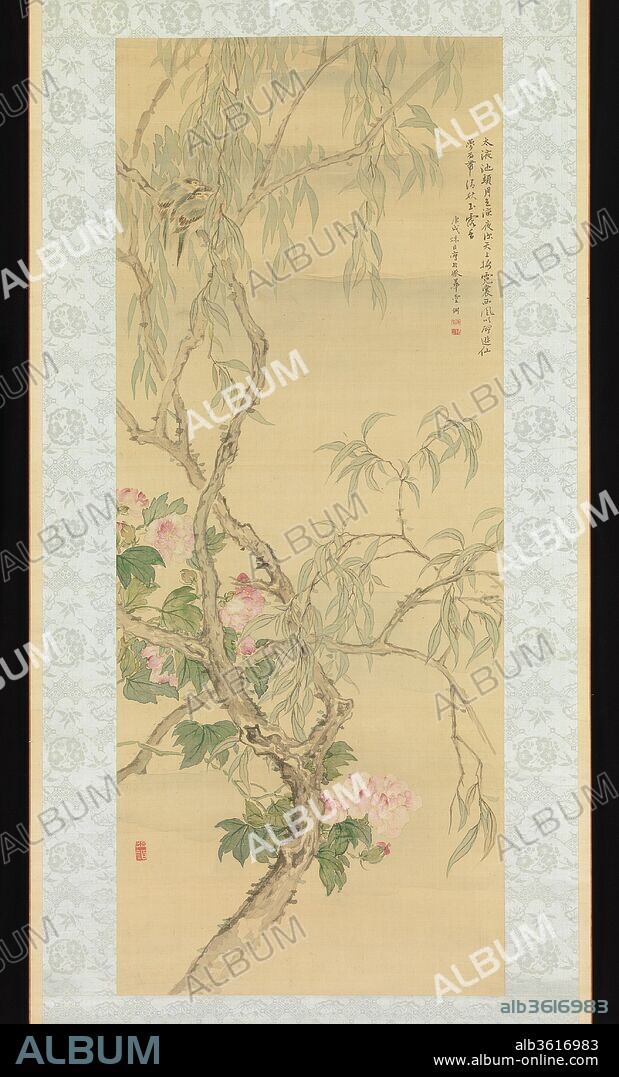alb3616983
TSUBAKI CHINZAN. Small Birds on a Willow Branch and Hibiscus Blossoms

|
Add to another lightbox |
|
Add to another lightbox |



Buy this image.
Select the use:

Author:
Title:
Small Birds on a Willow Branch and Hibiscus Blossoms
Caption:
Small Birds on a Willow Branch and Hibiscus Blossoms. Artist: Tsubaki Chinzan (Japanese, 1801-1854). Culture: Japan. Dimensions: Image: 43 3/8 x 17 1/2 in. (110.2 x 44.4 cm)
Overall: 75 3/8 x 30 3/8in. (191.5 x 77.2 cm). Date: dated Fall 1850.
Chinzan was raised in Edo in a samurai family. He trained under the Nanga painters Tani Buncho (1763-1840) and Watanabe Kazan (1793-1841) and favored Chinese literati artists of the Ming dynasty (1368-1644). Specializing in paintings of birds and flowers, he was an avid participant in sencha tea ceremonies, during which he would enjoy viewings of Chinese paintings and antiquities owned by his associates. He enhanced this painting with a poem that alludes to a passage from the "Song of Everlasting Sorrow" by the Tang dynasty (618-906) poet Bai Juyi (772-846). In it, Chinzan imagines the moon shining on the face of Lake Taiye and wonders if someone, a person he does not directly identify, still dances in the heavens in the deep of night. As the crisp autumn air of the west wind awakens him from his musings, he finds he can still smell her fragrance on the dew. In the original poem, the emperor discovers that, after the tragic death of his beautiful love, Yang Guifei, the hibiscus by Lake Taiye reminds him of her face, while the willows at Weiyang Palace recall her eyebrows. In this way, the contemporary poem and painting are brought together by the ancient text.
Technique/material:
Hanging scroll; ink and color on paper
Period:
Edo period (1615-1868)
Museum:
Metropolitan Museum of Art, New York, USA
Credit:
Album / Metropolitan Museum of Art, NY
Releases:
Image size:
2659 x 4400 px | 33.5 MB
Print size:
22.5 x 37.3 cm | 8.9 x 14.7 in (300 dpi)
 Pinterest
Pinterest Twitter
Twitter Facebook
Facebook Copy link
Copy link Email
Email
